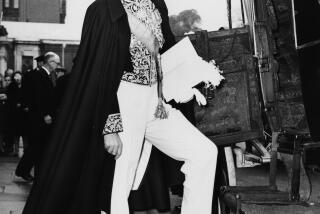When Terror Dresses Like an Ambassador
- Share via
The disarming and revealing question by the Syrian ambassador to London--”Do I look like a terrorist?”--highlights the changing character of terrorism in the mid-1980s, and the necessity of finding new ways of responding to it.
Terrorism is an old business. The Zealots used it against the Romans in Judea two millenniums ago, and the Assassins used it against their enemies in Persia and Syria a thousand years later. Terrorism reached its theoretical perfection in Russia during the 19th Century, and has waxed and waned in many forms, and in many corners of the world, since then.
What is striking about this terrorist tradition is not its antiquity, or even its persistence, so much as its variety. Though alike in one respect--their pursuit of political goals through the use of indiscriminate violence against innocents--terrorists have differed markedly in their tactics, psychologies, visions, motivations and styles.
For some, particularly the European terrorists of the extreme left during the 1970s, terrorism has been, in some measure at least, a revolt of children against parents. For some, such as terrorists in the Middle East, it has been a response to the intrusions of Western habits and values. For others, both in the Middle East and elsewhere, it has been a method to attain a separate state, or to right a historical wrong. And, increasingly, for still others it has become war by other means.
This use of terrorism is the one that has been brought to its highest state of refinement by Syria. In this form, terrorism has become an activity that is not only supported, but also systematically directed and executed, by a sovereign state using all of the means available to such a state. These include technological means, such as the manufacture of sophisticated weapons of death.
They include educational means, such as indoctrination and training within protected national borders. They include financial ones, such as maintenance of the operatives abroad. And they include diplomatic means, such as the use of courier pouches and embassies, and the provision of passports and safe-houses.
Which brings us back to the Syrian ambassador to London. Does he look like a terrorist? Certainly, he doesn’t look like a bearded member of the Baader-Meinhof Gang seeking to destroy the symbols of his parents’ corrupt state. He doesn’t look like a bestubbled associate of Abu Nidal gunning down children or worshipers or passersby in the name of a homeland. And he doesn’t look like a Shia dispatched with clerical blessings to find martyrdom in an act of explosive exaltation.
No, Loutof Haydar looks like what he is, an ambassador. In that role, he is part of a rational and elaborate apparatus that extends from his government’s embassies all the way back, through lines of diplomatic protection and communication, to his government’s capital, to its highest offices, to its bureaucracy of intelligence, and to its president. This apparatus not only supports the terrorism of various groups; it also plans, organizes and executes its own acts of terror. It does this not because it is crazed or spiritually aroused or historically wounded but because it hopes to accomplish easy military and political victories.
That is precisely what Syrian officials have long hoped to do. And it is precisely what they attempted to do when, according to British officials, Haydar and other Syrian officials were involved in a plot to plant a bomb on an El Al jumbo jet at Heathrow Airport last April--a bomb that would have destroyed the lives of all 375 on board, 200 of them American.
Britain responded to that involvement by breaking diplomatic ties with Syria, concluding that the dapper ambassador does indeed look like a terrorist.
What should be our response, and the response of Britain’s other allies, to the terrorism directed by Damascus and facilitated by its diplomats? So far, the response has been mixed and limited. The United States and Canada have recalled their ambassadors, and Washington is weighing other action. The European Community nations, having rejected Britain’s pleas that they break with Damascus, will meet again Nov. 10 to consider further proposals.
The ultimate concern in the West is the potential cost of punitive diplomatic actions. Syria is a strategic power in the Middle East, plays a dominant role in the affairs of Lebanon, is the only country likely to go to war with Israel, is a close ally of the Soviet Union and has ties with groups that hold Western hostages in Lebanon. Breaking diplomatic relations, or severely straining them, might make the Syrians harder to deal with and less likely to help when we or our allies need them.
But the Syrians have never helped us in strategic or humanitarian matters unless that help satisfied their needs as well. Besides, the potential gains from strong diplomatic actions would far outweigh the losses. Certainly, breaking diplomatic ties would cut off further opportunities for diplomatically facilitated terrorism.
If the plot against the El Al airliner had succeeded, we would never have known of Syria’s involvement. Now we do. The occasion requires strong action that is both just and effective. To be sure, we need to maintain ties with our enemies as well as our friends; but if those very ties are used to strangle us, we must break them.
More to Read
Sign up for Essential California
The most important California stories and recommendations in your inbox every morning.
You may occasionally receive promotional content from the Los Angeles Times.










